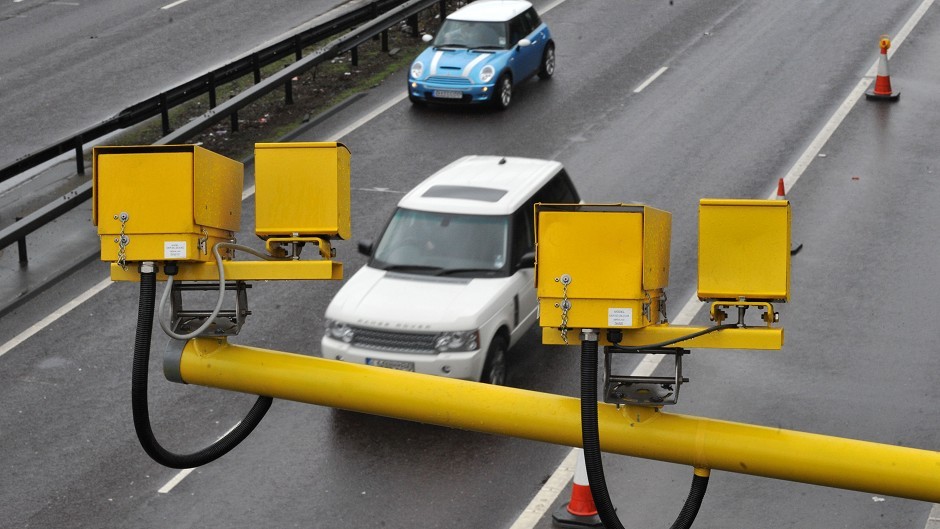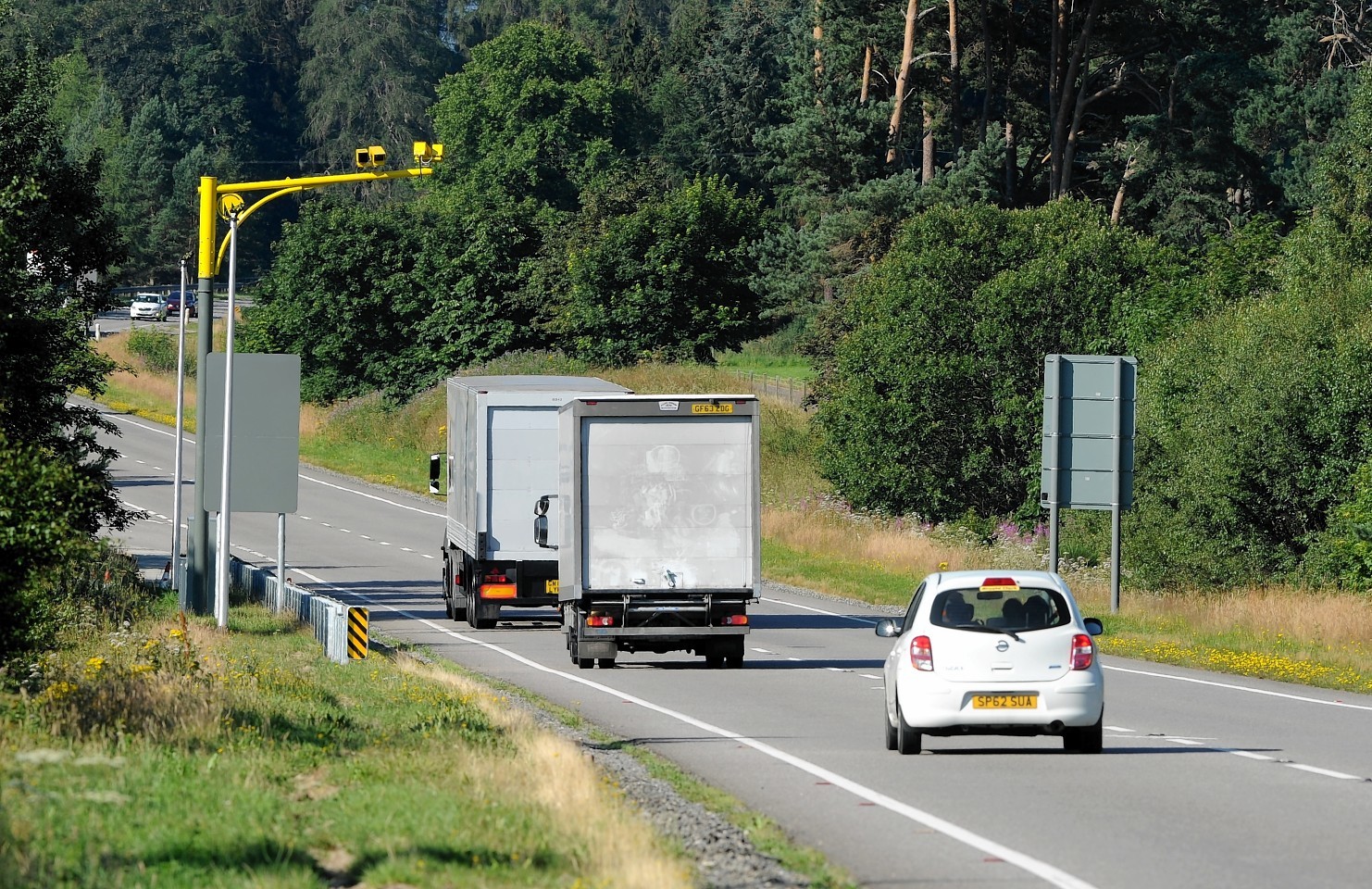Police and roads agency Transport Scotland were under fire last night after they refused to reveal how many motorists have been snared by the controversial A9 average-speed cameras.
They had stalled on responding to a Press and Journal request for information about the number of drivers falling foul of the “yellow vultures” and insisted it would be made available on January 21.
But yesterday they claimed they were still assessing the statistics and would not publish them until next week.
Campaigners and a senior UK Government minister said it was “frustrating” police and traffic chiefs were withholding details about how effective – or otherwise – the cameras had been.
SNP ministers insisted when they were installed that they would cut the accident and fatality rate on the trunk route between Inverness and Perth.
But campaigners said they would increase frustration, lead to more risk overtaking manoeuvres and increase journey times.
Watch our online editor drive the A9 the day the average speed cameras came into action:
Mike Burns, spokesman for the A9 Average Speed Cameras Are Not The Answer group, said: “It does make you wonder why it’s taking so long. It is frustrating.
“It’s interesting that they are able to reveal drink-drive figures within hours of the new limit being put in place but they can’t do anything for months with such a high tech and high profile system.”
Mr Burns added: “In our opinion the figures will be meaningless anyway when they come out mainly because they will have nothing to compare them against.
“There is no comparison of traffic volumes, journey times or anything like that so there’s no way of telling like for like what the figures reveal.
“There’s all these niggly little problems which will probably be contributing to delays.”
He added that he had not heard of any drivers being caught under the system – and that he had anecdotal evidence from a serving road policing officer that he was unaware of any drivers being caught either.
The controversial devices went live on October 28 last year.
Under the Freedom of Information Act, the Press and Journal requested details in November about the number of offences committed within the first 24 hours of the cameras being switched on, and during the first week.
Police rejected the request, saying that under the act, a source need not comply with the request if it planned to publish the information within 12 weeks.
In their response, the police said: “The due date for first publication of the A9 offender statistics is January 21, 2015 which falls within the 12-week publication timescale from the date of your request.”
North MP and Chief Secretary to the Treasury Danny Alexander, who has campaigned against the cameras, said: “SNP ministers who introduced this scheme with no regard to the strong feelings in the Highlands against the A9 average-speed cameras have a duty to be honest and up front with people about their impact.”
Yesterday police and Transport Scotland said they were assessing and collating statistics on safety on the road and the number of drivers caught by the camera scheme.
A police spokesman refused to answer questions about why the January 21 target had not been met.
He said: “It is hoped these statistics will be available next week.”
Fraser Grieve, Scottish Council for Development and Industry regional director, said: “We continue to have concerns about an increase in journey times on the road and have had some feedback to back that up.
“We will be interested to see what the figures say about journey times and the amount of traffic using the road.
“I think there has been a shift in people’s perception of the route, although it will be difficult to draw definite conclusions from the figures because almost immediately after the cameras went live there was a lot of roadworks on the road which will have had impact on times and speed.”
A spokesman for the A9 Safety Group, which includes Transport Scotland, said it was too early to give definitive figures – but suggested that findings so far presented substantial reductions in excess speeding from about one in 10 to fewer than one in 700 vehicles using the route.
He added: “We will report back shortly on their initial performance and will continue to provide updates both before and during the dualling of this important route.”
It cost £2.5million to instal the cameras on single carriageway stretches of the A9. The Scottish Government will spend £3billion dualling the road between now and 2025.

